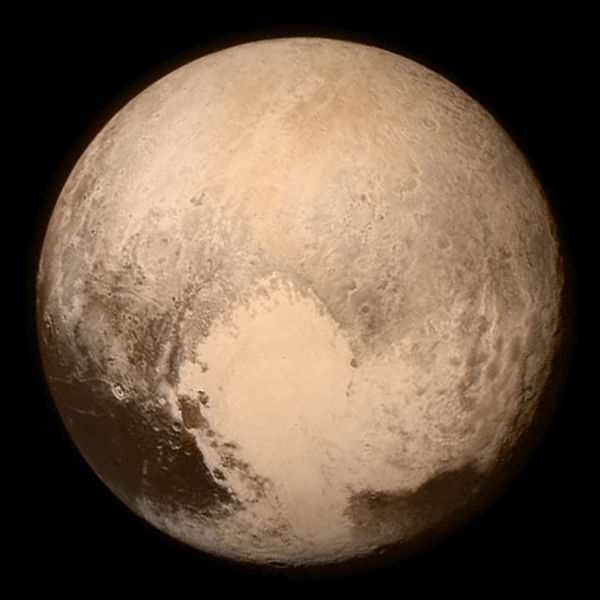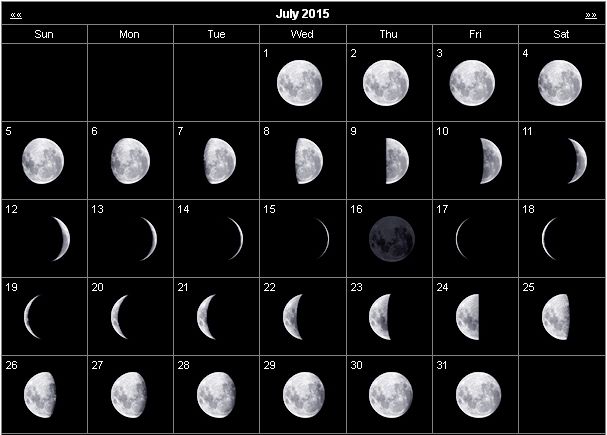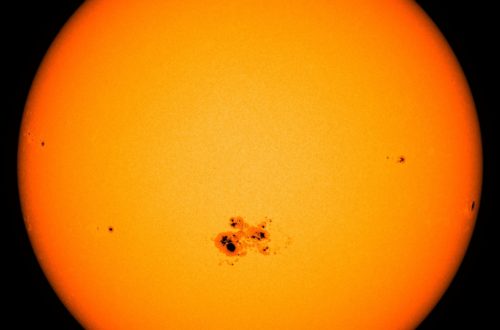Monthly Stargazing Calendar for July 2015
Looking for the July 2025 stargazing calendar?
Tonight on July 1st, there will be a conjunction of Venus and Jupiter. The two bright planets will be extremely close, appearing only 0.3 degrees apart.
On July 14 NASA’s New Horizons spacecraft is scheduled to arrive at Pluto after a nine and a half year journey. It was launched on January 19, 2006 and will be the first spacecraft to visit Pluto. New Horizons will give us our first close-up views of the dwarf planet and its moons. After passing Pluto, the spacecraft will continue on to the Kuiper belt to examine some of the other icy bodies at the edge of the Solar System.

Near-true-color image of Pluto taken by New Horizons spacecraft on 13 July 2015.
[Update July 15: New Horizons has arrived at Pluto as scheduled and sent back some photos, including the one above.]
Would you like to be notified of stargazing events?
Finally, near the end of the month on the night of July 28 and 29 we will witness the Delta Aquarids meteor shower. It is an average shower that can produce up to 20 meteors per hour at its peak, but a few can be seen any time from July 12 to August 23. The meteors originate from debris left behind by comets Marsden and Kracht. Unfortunately this year the nearly full moon will block out all but the brightest meteors. But if you are patient, you should still be able to catch a quite few good ones. Meteors will radiate from the constellation Aquarius, but can appear anywhere in the sky.
Moon phases
As you know, the moon has a big impact on the visibility of celestial bodies in the night sky. So here are the moon’s phases for this month:

Positions of the planets this month
Mercury: The closest planet to the Sun can be seen at dawn and dusk travelling across the constellation of Gemini, not far from Mars. This planet, being the closest to the Sun, will appear to move quickly in the night sky and its position will change in the following weeks.
Venus: The sister planet can be seen travelling across the constellation of Leo, not far from Jupiter. Just like Mercury, Venus can only be seen at dawn and dusk.
Mars: The red planet can be seen in the constellation of Gemini.
Jupiter: The gas giant is visible in the constellations of Leo. Jupiter can easily be spotted with the naked eye, even in highly illuminated cities.
Saturn: The ringed giant can be seen with the naked eye between the constellations of Scorpius and Libra.
Uranus: The gas giant can be seen in the constellation of Pisces with the use of a telescope.
Neptune: The blue giant requires a telescope pointed in the constellation of Aquarius in order to be seen.
Major astronomical events next month
- August 12, 13 – Perseid meteor shower.
- August 29 – Supermoon.
See also:
- Previous month’s calendar: Stargazing Calendar for June 2015
- Next month’s calendar: Stargazing Calendar for August 2015
Would you like to receive similar articles by email?





